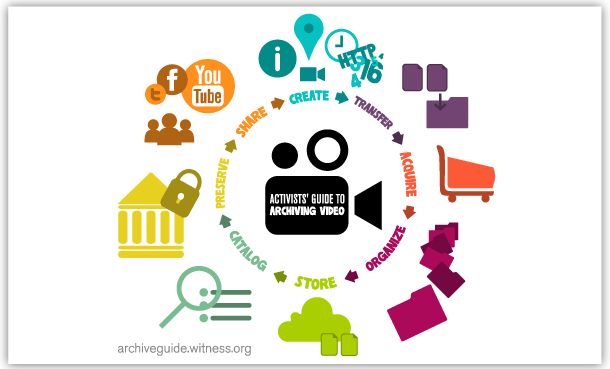By Yvonne Ng, WITNESS Archivist
A Syrian group has over 160,000 videos of human rights abuses, collected over more than two years. The group wants to ensure that these videos can be used in the future to prosecute crimes and build a better political situation. But how do they find footage of a specific massacre or war crime from this collection? How much of it could be lost if their storage system fails?
Does this scenario sound familiar? In today's digital environment, it is easier than ever to capture video, building a large collection quickly. However, just as quickly the files can be lost, corrupted, or rendered unusable.
Fortunately, there is something you can do about it, and our new Activists' Guide to Archiving Video can help. The guide is now available in English, Arabic, and soon, in Spanish. It's licensed for re-use under a Creative Commons Attribution-NonCommercial-ShareAlike license.
Developed for human rights activists, small NGOs, media collectives, and citizen activists, this guide provides practical steps for managing, storing, sharing, and preserving your videos. If you are creating, collecting, or curating videos, this guide will walk you through how to maintain your videos so that they stay intact, authentic, and accessible.
We created this guide because we frequently hear from activists and other organizations that managing their videos is among their most difficult challenges. Unfortunately, we hear stories about videos that are accidentally deleted, that cannot be retrieved from hard drives, that cannot be found in a collection, or that are unidentifiable and unverifiable due to lack of documentation. While many of us take great care to capture important events as they unfold, or to interview survivors of human rights abuses, we often have no plan for making sure these video recordings remain safe and usable over even a short period of time.
The Activists' Guide to Archiving Video demystifies and clearly explains archiving concepts and practices. It breaks archiving down into eight stages, and shows how to incorporate it into your work.
While archiving is part of making your videos accessible and usable in the present, we also must bear in mind their long-term purpose. By protecting and preserving videos, we enable them to be used as human rights evidence and for the historical record.
A powerful example of this is the work of filmmaker Pamela Yates. Thirty years ago she made a documentary about the genocide of Mayan communities in Guatemala. In preproduction for a new documentary, she rediscovered a 1982 interview with General Rios Montt, who was then the president of the country. The footage proved valuable in convincing a judge that Rios Montt should be arrested and indicted for genocide. More about Pamela's extraordinary story is available on her website.
Archives ensure that underrepresented voices endure and act as a bulwark against impunity and forgetting. Your videos could be valuable to the future in ways that we cannot even foresee. If you use our guide, tell us what you think, we'd appreciate your feedback.

